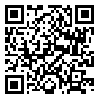Articles accepted at the time of publication
Back to the articles list |
Back to browse issues page
Delangiz Dalir1  , Mehdi Purmohammad *
, Mehdi Purmohammad * 
 2, Arsalan Golfam3
2, Arsalan Golfam3 
 , Reza Khosroabadi4
, Reza Khosroabadi4 
 , Mahnaz Karbalai Sadegh5
, Mahnaz Karbalai Sadegh5 

 , Mehdi Purmohammad *
, Mehdi Purmohammad * 
 2, Arsalan Golfam3
2, Arsalan Golfam3 
 , Reza Khosroabadi4
, Reza Khosroabadi4 
 , Mahnaz Karbalai Sadegh5
, Mahnaz Karbalai Sadegh5 

1- College of Literature, Humanities and Social Sciences , Science and Research Branch, Islamic Azad University, Tehran, Iran.
2- Institute for Cognitive and Brain Science,Shahid Beheshti University, Tehran, iran. ,purmoham@ualberta.ca
3- College of Humanities,Tarbiat Modares University,Tehran,Iran.
4- The Institute for Cognitive and Brain SciencesShahid Beheshti University, Tehran, Iran.
5- College of Literature ,humanities and Social Science, Science and Research Branch, Islamic Azad University, Tehran, Iran.
2- Institute for Cognitive and Brain Science,Shahid Beheshti University, Tehran, iran. ,
3- College of Humanities,Tarbiat Modares University,Tehran,Iran.
4- The Institute for Cognitive and Brain SciencesShahid Beheshti University, Tehran, Iran.
5- College of Literature ,humanities and Social Science, Science and Research Branch, Islamic Azad University, Tehran, Iran.
Abstract: (1388 Views)
In the Persian language, which follows the SOV (Subject-Object-Verb) word order, the interrogative complement or prepositional object usually appears after the object in the focal position. However, it is possible to move this phrase to other positions within the sentence. The aim of this study is to investigate the processing of interrogative complement displacement in Persian using Event-Related Potentials (ERPs) based on Friederici's syntactic processing model. This study focuses on the central-parietal region of the brain, specifically the N400 and P600 components, which, according to Friederici's language processing model (1995), examine the filler-gap dependency structure and the mental representation of these phrases. Four different positions of the interrogative complement in Persian were examined, and 50 sentences were constructed for each condition.
Article Type: مقالات علمی پژوهشی |
Subject:
Linguistics
Send email to the article author
| Rights and permissions | |
 |
This work is licensed under a Creative Commons Attribution-NonCommercial 4.0 International License. |





